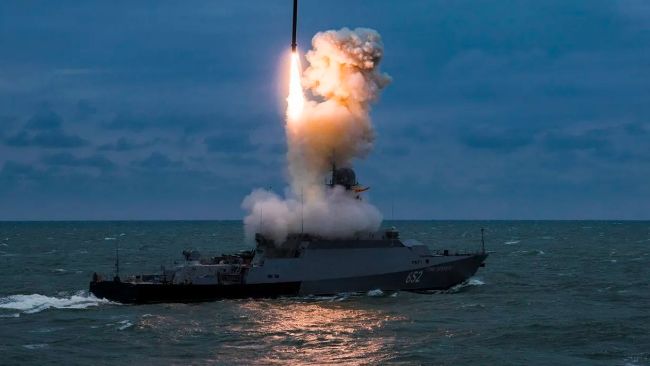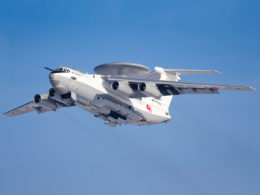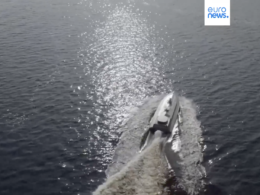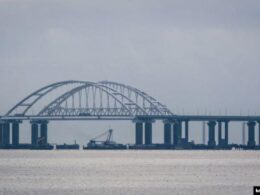For the first time during its ongoing war against Ukraine, Russia launched Kalibr cruise missiles from the Sea of Azov, to where it withdrew them from the Black Sea, fearing Ukrainian naval drone attacks.
The Ukrainian Navy spokesperson, Dmytro Pletenchuk, revealed this information during a national telethon, highlighting the shift in Russian naval tactics.
“Four missiles were launched from the Sea of Azov, and this is an important turning point because, as you can see, they are using it, considering it a safer area than the Black Sea,” Pletenchuk explained. He added that for safety reasons, the Russians have also begun positioning their ships in the Sea of Azov instead of the Black Sea.
According to Pletenchuk, there is currently one submarine in the Black Sea, potentially carrying up to four cruise missiles. Additionally, three missile carriers are present in the Sea of Azov, with a combined capacity of up to 20 missiles.
The spokesperson emphasized that this event marks a “turning point,” noting that the enemy considers this location safer than the Black Sea, where Russian ships are more vulnerable to attacks from Ukrainian surface drones.
Satellite imagery has confirmed that Russia has moved three Kalibr cruise missile carriers to the Sea of Azov. These are believed to be three missile corvettes of Project 21631 “Buyan-M” class, namely “Vyshniy Volochek,” “Ingushetia,” and “Grayvoron,” with a total salvo capacity of 24 Kalibr missiles.
https://twitter.com/MT_Anderson/status/1800993501280190492?ref_src=twsrc%5Etfw%7Ctwcamp%5Etweetembed%7Ctwterm%5E1800993501280190492%7Ctwgr%5Ed20fb380d933888cb7ad47dcdb4ee63c5c29277e%7Ctwcon%5Es1_&ref_url=https%3A%2F%2Fdefence-ua.com%2Fl-media%2Faddarticles%2F
The relocation of these vessels appears to be a strategic move by Russia, likely assuming that the ships would be protected by the Crimean Bridge, which Russians defend with barges and boom barriers intended to obstruct kamikaze boats.
However, Pletenchuk previously stated that these corvettes would not be able to constantly patrol the Sea of Azov and would need to return to Novorossiysk or proceed to a new base in the Sea of Azov. This could provide a “window of opportunity” for the Ukrainian Armed Forces to strike with available long-range weapons, Defense Express reported.
Additionally putting Russia’s logic into question is a 10 June Ukrainian naval drone strike on Russia’s Taganrog port in the Azov Sea, which suggests that Ukrainian engineers have created a system to control long-range surface drones, and a 6 June Ukrainian naval drone attack on northwestern Crimea, where surface drones managed to bypass the port boom defense.
The night attack on Ukraine, during which these missiles were launched, resulted in damage to critical infrastructure in Lviv and Zaporizhzhia oblasts, with energy workers reported injured.
Related:
- How Ukraine’s scrappy marine drones are revolutionizing naval warfare
- Ukraine unveils Sea Baby Avdiivka naval drone
- Ukrainian naval drones sink Russian Navy’s tugboat after breaching port boom defense in occupied Crimea
- HUR: Ukrainian sea drones sink two Russian naval boats (video)
- Ukraine’s SeaBaby naval drones can now engage in sea battles, not only carry explosives






